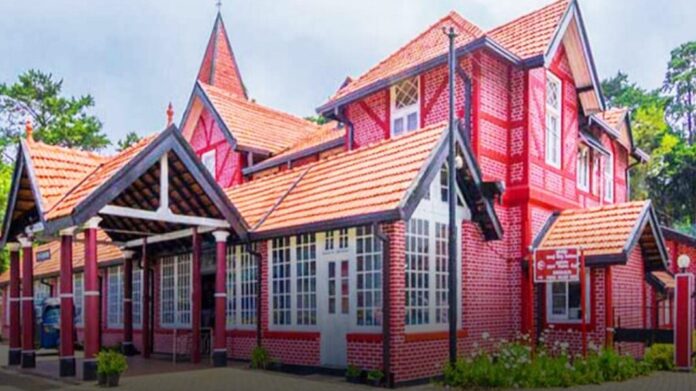Balancing Heritage and Modern Tourism Vision
The 130-year-old Nuwara Eliya Post Office, a proud emblem of Sri Lanka’s colonial heritage and one of the country’s most photographed landmarks, is set to undergo a long-awaited renovation. A special discussion chaired by Minister of Health and Media Dr. Nalinda Jayathissa was recently held at the Ministry, bringing together senior officials from the Postal Department, Sri Lanka Tourism Development Authority, Department of Archaeology, Department of Buildings, the Sri Lanka Navy, and the Ministry of Health and Media. The meeting focused on the urgent need to repair the deteriorating roof and prepare a comprehensive renovation plan that preserves the building’s architectural integrity while enhancing its appeal as a cultural and tourist destination.
The Nuwara Eliya Post Office, located in the heart of the hill country’s “Little England,” has long served as both a functioning postal facility and a symbolic representation of the region’s heritage. The structure, built in the late 19th century during the British colonial era, still carries its original red-brick façade and distinctive clock tower. However, decades of exposure to monsoon rains and limited maintenance have taken a toll, leading to leaks and interior damage. During the meeting, it was agreed that the first step would be to replace the roof immediately to protect postal operations and safeguard the experience of both local and foreign visitors who continue to frequent the site.
Minister Jayathissa directed officials to initiate prompt restoration based on a basic plan and to engage qualified heritage designers and sculptors to ensure the authenticity of the structure is maintained. This decision follows a recent controversy over previous proposals by former administrations to transfer the building to private ownership, a move that sparked significant public concern over the potential loss of national heritage. The current government’s stance, reaffirmed at the discussion, is to preserve the site under state custodianship while simultaneously promoting it as a key heritage attraction within Sri Lanka’s growing tourism framework.
The renovation effort carries both advantages and challenges. On one hand, restoring the building to its former glory will not only protect a landmark of architectural and historical value but also strengthen Nuwara Eliya’s identity as a heritage tourism destination. It may serve as a model for how colonial-era structures can be repurposed without privatization, combining preservation with sustainable tourism. The involvement of multiple state institutions and technical experts, including the Department of Archaeology and the Navy, signals a more coordinated approach to heritage management.
However, experts caution that such projects must carefully balance conservation principles with commercial objectives. Over-modernization or excessive tourist commercialization could risk diluting the authenticity that gives the Nuwara Eliya Post Office its charm. Maintenance costs, long-term sustainability, and the operational needs of the Postal Department also remain considerations that require strategic oversight.
Ultimately, the renovation of the Nuwara Eliya Post Office is more than a construction project, it is a reflection of how Sri Lanka chooses to engage with its past while preparing for its future. If executed with sensitivity and foresight, the project could set a national precedent for revitalizing historic public buildings, transforming them into living spaces where history and progress coexist.




